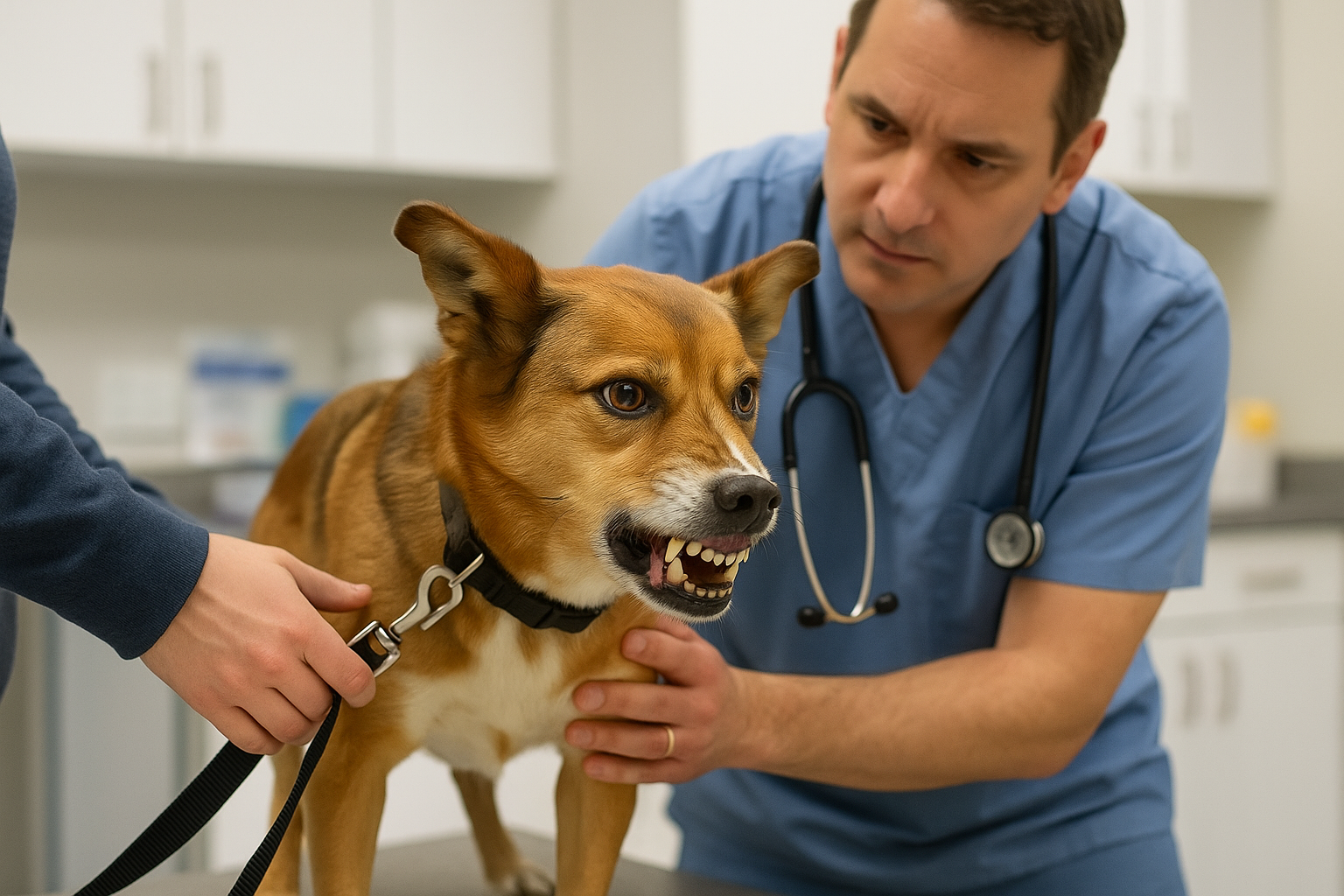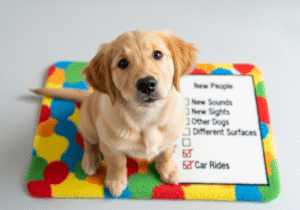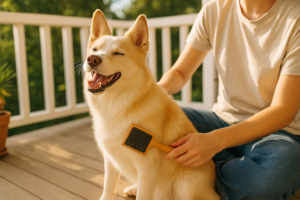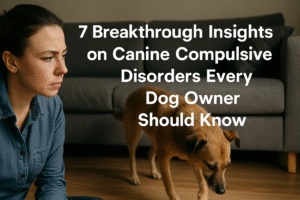📢 Medical Disclaimer:
This article is for informational purposes only and does not substitute professional veterinary advice. Always consult your veterinarian if your dog shows signs of aggression.
Has your friendly dog suddenly turned aggressive—or shown warning signs like growling, snapping, or guarding toys? You’re not alone. Dog aggression can be alarming, confusing, and emotionally draining for pet owners. Whether it’s a sudden outburst or a long-standing issue, understanding why it’s happening is the first step toward finding a safe, effective solution.
In my Ottawa practice, I’ve seen dozens of dogs labeled “aggressive” when, in fact, they were in pain or had an undiagnosed medical issue. Other times, fear or poor early socialization was the real culprit. In this guide, we’ll walk through both medical and behavioral dog aggression causes—so you can help your pup feel safe and supported again.
Table of Contents
🐾 Key Takeaways: Understanding Dog Aggression
- Dog aggression can stem from medical or behavioral causes—or both.
- Common medical contributors include hypothyroidism, pain, and neurological disorders.
- Behavioral causes range from fear-based aggression to resource guarding and territorial instincts.
- Thyroid hormone therapy may help in some hypothyroid dogs, but research shows mixed effects on aggression improvement.
- The most effective approach combines veterinary diagnosis with behavioral training, especially with help from certified professionals.
- Sudden or unexplained aggression, especially in older dogs, always warrants a veterinary check-up.
- Use a tracking tool like C-BARQ and schedule regular follow-ups to monitor changes.
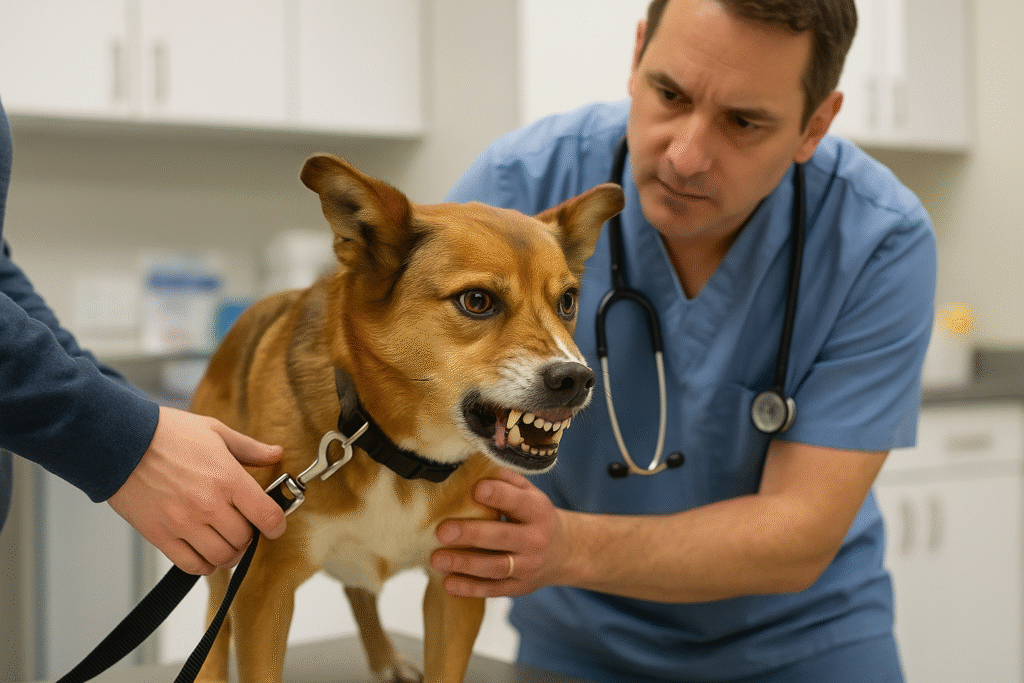
🩺 Medical Causes of Dog Aggression
Medical issues are often overlooked but critical to rule out when a dog becomes aggressive. In fact, some cases of dog aggression I’ve seen in-clinic were entirely reversed once we treated the underlying illness. Let’s explore the most common medical causes of dog aggression:
🧬 Hypothyroidism and Aggression
Hypothyroidism occurs when a dog’s thyroid gland fails to produce enough hormones. Symptoms can include weight gain, lethargy, hair thinning—and in some cases, increased irritability or aggression.
Clinical observations:
- A well-known case report linked “grumpy” behavior in mature dogs to low thyroid levels, which resolved with hormone therapy (ResearchGate).
- However, a prospective study of 20 hypothyroid dogs showed that while their energy increased with levothyroxine, there was no significant improvement in aggression over 6 months (PMC).
According to a 2023 review in MacVetRev, hypothyroidism may heighten excitability or attention-seeking behavior—but direct links to aggression are inconsistent.
Key point: If your dog has both confirmed hypothyroidism and aggression, treatment may help—but it’s not a guaranteed fix for dog aggression.
🦴 Pain-Related Aggression
Pain is one of the most underdiagnosed triggers of dog aggression. Dogs can’t always show us where it hurts, so their aggression becomes a protective response.
Examples include:
- Arthritis or joint disease: Older dogs may lash out when touched or approached.
- Dental pain: A sore mouth can lead to food-guarding or head shyness.
- Spinal or nerve pain: Sudden biting when picked up or petted.
Dr. Christopher Pachel, a board-certified veterinary behaviorist, warns that failing to diagnose pain can lead to unnecessary behavioral labeling (DVM360).

🧠 Neurological and Hormonal Conditions
Sometimes dog aggression is linked to the brain or hormone imbalances.
- Rage syndrome, a seizure-related condition, has been documented in breeds like Springer Spaniels and Belgian Malinois. These dogs show sudden, unprovoked aggression and often appear confused afterward (Wikipedia).
- Brain tumors, especially in older dogs, can lead to personality changes or new aggressive behavior.
- Cushing’s disease or adrenal tumors may alter behavior through hormonal shifts.
🧫 Gut–Brain Axis and Aggression
Emerging studies suggest that a disrupted gut microbiome can affect mood and behavior—even aggression. While research in dogs is still early-stage, anxiety and reactivity are being explored through the gut–brain connection (MDPI).
📋 5-Minute Home Checklist for Medical Triggers
| Symptom | Possible Medical Cause |
|---|---|
| Growling when touched | Pain (joint, dental, nerve) |
| Sudden aggression after age 6 | Hypothyroidism, brain tumor |
| Aggression during sleep/waking | Seizure disorder or “rage” |
| Lethargy + aggression | Thyroid, adrenal, pain |
| Changes in appetite or thirst | Hormonal imbalance |
When your dog suddenly becomes aggressive, assume medical first. Your vet can guide you through diagnostics like bloodwork, hormone panels, and pain assessments.
🧠 Behavioral Causes of Dog Aggression
Once medical causes are ruled out, behavioral patterns often explain what’s happening. In my experience, many dogs labeled as “aggressive” are simply anxious, misunderstood, or poorly socialized. The good news? Behavioral dog aggression is usually manageable with time, structure, and professional help.
😨 Fear-Based Aggression
This is one of the most common forms of dog aggression, especially in dogs that were punished, under-socialized, or had traumatic pasts.
Signs include:
- Lip-licking, cowering, or backing away before reacting.
- Aggression that occurs when the dog feels cornered or startled.
- Improvement with distance or calming signals.
Fear-aggressive dogs aren’t “bad”—they’re terrified. With counter-conditioning and positive exposure, many can overcome this pattern.

🏠 Resource Guarding and Territoriality
Dogs may instinctively guard what they value, from food bowls to human laps.
Two key subtypes:
- Resource guarding: Growling, snapping, or biting over food, toys, or sleeping spots.
- Territorial aggression: Barking or lunging at people or animals approaching “their” home or family.
This behavior often starts mild and escalates if ignored. According to The Spruce Pets, early intervention with structured training is critical.
🧸 Socialization and Learned Behavior
Dogs that weren’t exposed to different people, animals, or environments before 16 weeks are more likely to show dog aggression later in life.
Risk factors include:
- Puppies raised in isolation or hoarding conditions.
- Dogs with negative experiences at dog parks or vet clinics.
- Overuse of punishment-based training, which increases fear.
Proper early socialization builds resilience. Adult dogs can improve too—with time and reward-based training.
🧠 Learned Aggression: What Owners Reinforce
Sometimes aggression is accidentally rewarded.
Example:
A dog growls when someone approaches his bed. The owner backs off. Over time, the dog learns that aggression gets results.
This is known as reinforced aggression, and it’s very common. A certified trainer or behaviorist can help retrain both the dog—and the humans.
👨🏫 When to Involve a Pro
If your dog has bitten someone, shown repeated threats (growling, lunging), or escalated over time, work with a:
- Certified Applied Animal Behaviorist (CAAB)
- Veterinary Behaviorist (DACVB)
- Fear-Free Certified Trainer
They use science-based tools like desensitization, counter-conditioning, and structured exposure to change how your dog responds to triggers—not suppress behavior.
🧪 Hypothyroidism–Aggression Connection: What Studies Show
The link between dog aggression and hypothyroidism has been debated in veterinary circles for years. While some clinicians report behavior improvements with thyroid hormone therapy, scientific data shows mixed results. Let’s look at key studies that explore this connection:
📊 Comparative Study Table
| Study | Methodology & Population | Findings |
|---|---|---|
| Beaver & Haug Case Report | Middle-aged dogs with aggression + low thyroid | Behavior improved with levothyroxine. Seen in clinical anecdotes (ResearchGate). |
| Prospective Study (20 Dogs) | Evaluated activity, aggression, hormones over 6 months | ↑ Energy at 6 weeks; no statistically significant drop in aggression or serotonin levels (PMC). |
| Cross-sectional Analysis (ScienceDirect) | Compared thyroid panels of aggressive vs. non-aggressive dogs | No meaningful differences in T4, TSH, or autoantibodies (ScienceDirect). |
| MacVetRev Survey (2023) | Assessed clinical signs in hypothyroid dogs | Reported increased excitability and attention-seeking, but not aggression per se (MacVetRev). |
| MDPI Review (2019) | Literature review on medical-behavior overlaps | Hypothyroidism may lower aggression thresholds but rarely the sole cause (MDPI). |
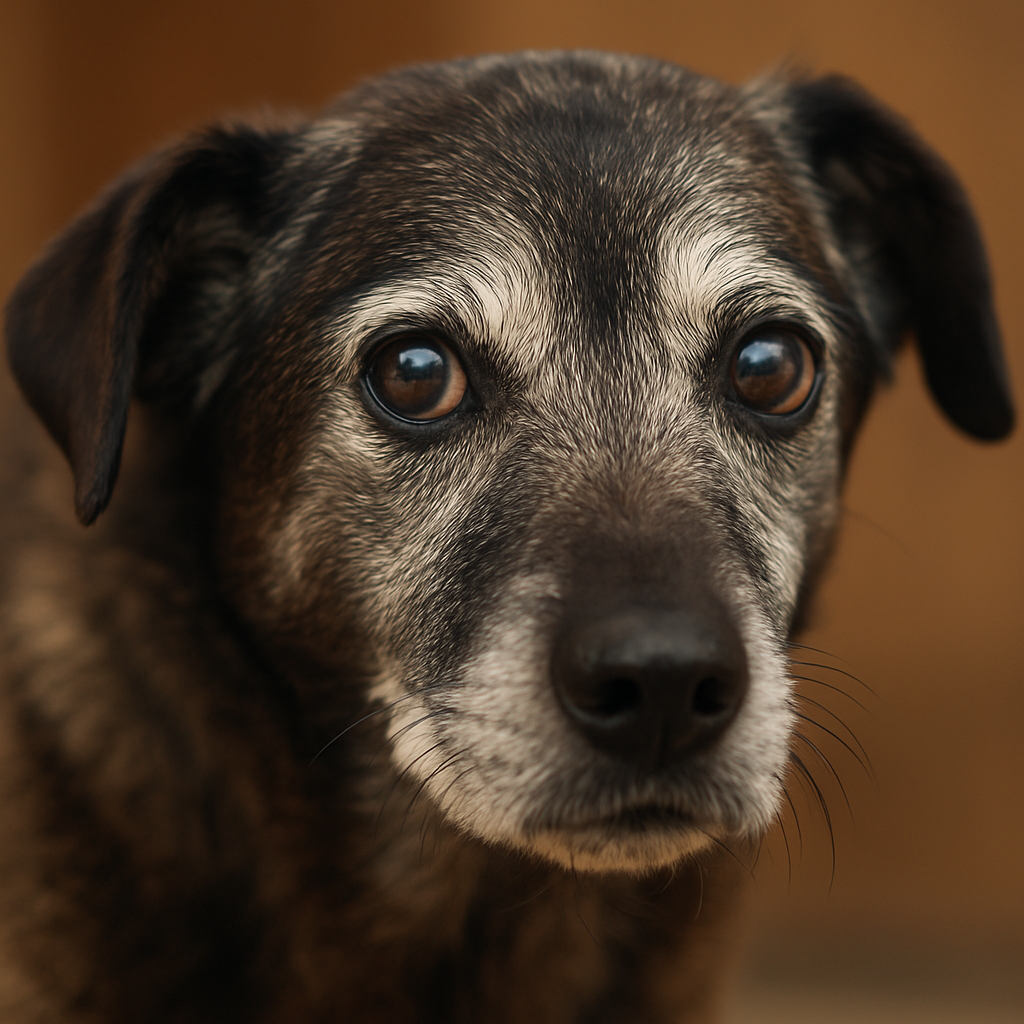
🔍 What Does This Mean for Your Dog?
If your dog is both aggressive and hypothyroid, it’s reasonable to treat with levothyroxine—but expectations should be realistic. Behavior may not improve unless the hormone imbalance is a significant contributor.
In-clinic note:
I’ve treated several dogs with confirmed low thyroid and aggression. While their energy and coat improved rapidly, behavior changes took longer—and weren’t always dramatic.
This is why dog aggression requires a broad evaluation, not just a lab result.
🧭 Clinical Roadmap: What to Do if Your Dog Shows Aggression
When dealing with dog aggression, the most effective path is a structured, evidence-based approach that blends medical insight with behavioral expertise. Here’s a clear plan that I recommend in practice:
✅ Step 1: Rule Out Medical Issues
Before making any behavioral assumptions, your veterinarian should perform:
- A comprehensive physical exam
- Bloodwork including T4, Free T4, and TSH to screen for hypothyroidism
- Neurological assessment if aggression is sudden, episodic, or trance-like
- Pain assessment, including joint palpation, spinal manipulation, and dental checks
If aggression appears suddenly or escalates quickly, prioritize this step.
✅ Step 2: Interpret Thyroid Results Carefully
- If your dog has low thyroid hormones and signs like weight gain, lethargy, or cold intolerance, start levothyroxine under vet guidance.
- If labs show subclinical hypothyroidism (borderline low T4, normal TSH), don’t rush into hormone therapy—focus on behavioral management first.
- Recheck thyroid values after 6–8 weeks on treatment, and track any changes in dog aggression using tools like C-BARQ (Canine Behavioral Assessment and Research Questionnaire).
✅ Step 3: Partner With a Certified Behaviorist
Once medical causes are addressed, involve a certified behavior expert who will:
- Identify triggers (strangers, food, touch)
- Develop a desensitization and counter-conditioning plan
- Teach you how to read early signals (whale eyes, stiff posture, lip licking)
Avoid punishment-based trainers, as these often worsen fear and dog aggression.
✅ Step 4: Track Progress Systematically
Behavior change takes time and patience.
- Use a journal or spreadsheet to log incidents, triggers, and improvements.
- Video-record difficult interactions (safely) for professional review.
- Schedule follow-ups with your vet and trainer every 4–6 weeks.
Over time, many dogs improve significantly—but consistency is key.
💰 Typical Canadian Costs for Work-Up
| Service | Estimated Cost (CAD) |
|---|---|
| Vet exam + behavior history intake | $100–$180 |
| Full blood panel + thyroid profile | $180–$250 |
| Pain evaluation (X-rays, sedation) | $250–$600 |
| Initial behaviorist consult | $200–$350 |
| Follow-up training sessions (per) | $100–$150 |
Costs can vary by province and clinic. Some pet insurance plans may cover diagnostics or behaviorist services.
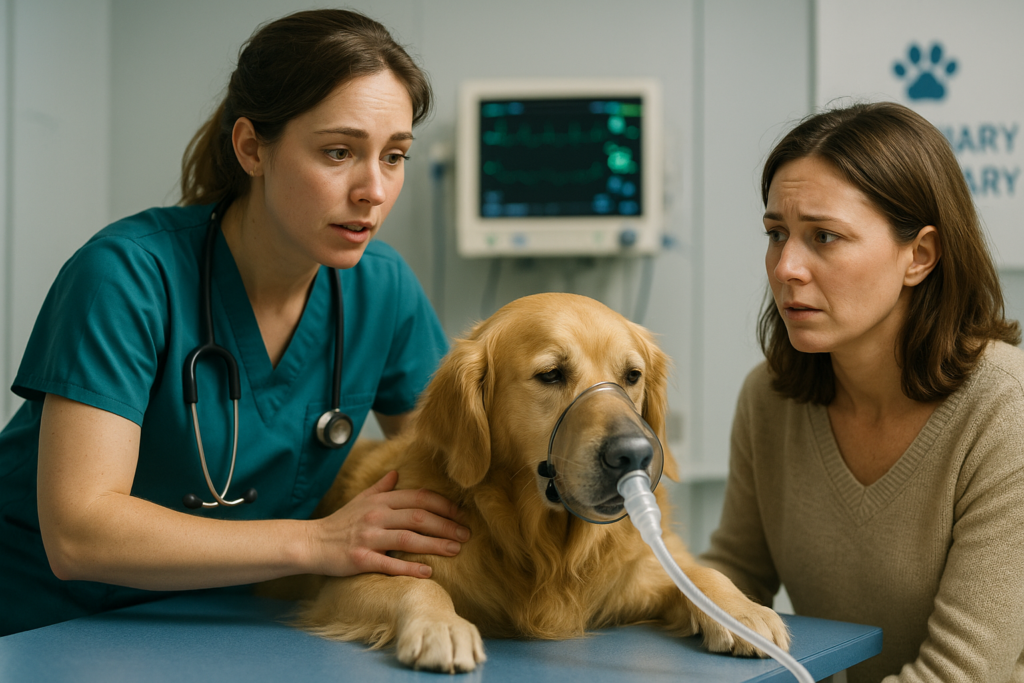
🕵️ Chronic vs Sudden Dog Aggression: Why It Matters
Understanding when your dog’s aggression started helps determine its likely cause. In practice, I’ve found the timeline to be just as important as the behavior itself.
🆘 Sudden-Onset Aggression
If your dog has recently started acting aggressively—without a clear reason—it’s a red flag that something medical may be brewing.
Common triggers:
- Acute pain: from injuries, slipped discs, or oral abscesses.
- Seizure-related episodes: especially in breeds prone to rage syndrome (Wikipedia).
- Brain disease: like tumors or age-related cognitive decline.
- Hormonal shifts: especially thyroid or adrenal disease.
These dogs often need urgent veterinary care. Sudden dog aggression in an older dog is never “just old age”—get it checked.
📉 Gradual or Context-Specific Aggression
When aggression builds slowly or appears only in specific settings, behavioral causes are more likely.
Examples:
- Growling when guests visit = territorial aggression
- Snapping when someone reaches for food = resource guarding
- Lunging at strange dogs on walks = reactivity or poor socialization
These patterns often respond well to behavioral support, especially when addressed early.
⚖️ Comparison Table
| Aggression Onset | Likely Cause | Recommended Action |
|---|---|---|
| Sudden (days–weeks) | Pain, neurological, hormonal | Full vet workup ASAP |
| Gradual (months) | Fear, habit, learned responses | Begin behavioral consult |
| Episodic (random) | Seizure-related, hidden triggers | Video episodes; consult vet + DACVB |
| Trigger-based | Territorial, guarding, fear | Identify triggers; train/desensitize |
Recognizing the timeline of your dog’s behavior can drastically change the course of treatment—and improve outcomes.
🚫 Prevention Tips: How to Minimize Dog Aggression Early
While not every case of dog aggression can be prevented, early intervention and thoughtful training can drastically reduce the risk. Here’s how to set your dog up for long-term emotional success:
🐶 Start With Smart Socialization
Best window: 3 to 16 weeks of age
Expose your puppy—gently and positively—to:
- People of different ages, races, and clothing types
- Calm, friendly dogs of various sizes
- Busy environments like vet clinics and parks
Avoid flooding your puppy. Focus on quality, not quantity.
🧠 Use Positive Reinforcement Training
Punishment increases anxiety and can trigger aggression.
- Reward calm, friendly behavior
- Redirect instead of punishing mistakes
- Use fear-free certified trainers for coaching
According to DVM360, punitive methods often suppress warning signs—making dogs more unpredictable.
🩺 Prioritize Regular Vet Visits
Many early signs of pain or discomfort can be subtle—like slowing down, licking joints, or sleeping more.
Schedule:
- Annual exams for adults
- Bi-annual exams for seniors (7+ years)
- Prompt check-ups if behavior changes suddenly
🛠️ 5-Minute Aggression Prevention Checklist
| ✅ Do This | ❌ Avoid This |
|---|---|
| Socialize your pup early | Isolating during the critical window |
| Use rewards-based training | Alpha-rolls, leash pops, scolding |
| Supervise play with toys and food | Letting dogs “fight it out” |
| Reinforce calm greetings | Encouraging barking at strangers |
| Monitor health changes | Ignoring new or odd behaviors |
By being proactive, you can often prevent dog aggression from developing—or catch it before it becomes a serious problem.
❓ Frequently Asked Questions (FAQ)
These are some of the most common questions I hear in my clinic from concerned dog parents dealing with dog aggression:
1. Can thyroid problems really cause dog aggression?
Yes, but the connection is complex. Hypothyroidism may lower the threshold for aggression in some dogs, especially if they’re also anxious or in pain. However, studies show mixed results regarding whether thyroid hormone treatment consistently improves aggressive behavior (PMC).
2. What breeds are more likely to show aggression due to medical issues?
Breeds like Belgian Malinois, Springer Spaniels, and Cocker Spaniels have been associated with rage syndrome, a neurological disorder. Large breeds like Golden Retrievers or Labs may hide pain (like arthritis) until it causes behavioral changes. However, dog aggression isn’t breed-exclusive—it’s more about the individual.
3. How can I tell if my dog’s aggression is medical or behavioral?
Look at timing and triggers:
- Sudden onset or aggression during handling = likely medical
- Gradual aggression or specific contexts (e.g., food, strangers) = usually behavioral
A vet exam is the best place to start.
4. Will thyroid medication calm my aggressive dog?
Only if hypothyroidism is a contributing factor. Levothyroxine can help with energy and mood, but aggressive behavior may persist if driven by fear, past trauma, or poor socialization. Always combine medical treatment with behavioral work.
5. What’s the first thing I should do if my dog suddenly becomes aggressive?
Isolate safely, don’t punish, and call your vet. Sudden dog aggression often signals pain, infection, or a neurological issue that needs urgent evaluation. After ruling out medical causes, consult a certified behaviorist.
🧩 Final Thoughts
Dog aggression is never a simple issue—and it’s never just a “bad dog.” In most cases, it’s a distress signal. Whether the root is a medical condition like hypothyroidism or pain, or a behavioral challenge like fear or guarding, every aggressive behavior has a cause—and a pathway forward.
As a veterinarian, I’ve seen how powerful a dual approach can be. Medical evaluation rules out serious issues like hormone imbalances or hidden pain. Behavioral therapy helps reshape the dog’s response to the world. When we address both sides of the coin, the success stories are truly heartwarming.
Key takeaway:
If your dog is showing signs of aggression, don’t wait. The earlier you act, the better your chances of improving both safety and quality of life—for your dog and your family.

